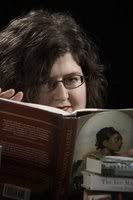 It’s astonishing to think that not long ago female mystery authors had difficulty staying in print, being purchased for library collections or getting review attention from mainstream media. In response to these disturbing facts, a group of 26 female authors came together in 1986 to found Sisters in Crime, an international organization designed promote female mystery and crime writers. Now, on the 20th anniversary, Sisters on the Case: Celebrating Twenty Years of Sisters in Crime has been published to mark this important milestone and highlight some of the writers integral to the success of the collective.
It’s astonishing to think that not long ago female mystery authors had difficulty staying in print, being purchased for library collections or getting review attention from mainstream media. In response to these disturbing facts, a group of 26 female authors came together in 1986 to found Sisters in Crime, an international organization designed promote female mystery and crime writers. Now, on the 20th anniversary, Sisters on the Case: Celebrating Twenty Years of Sisters in Crime has been published to mark this important milestone and highlight some of the writers integral to the success of the collective.When faced with 26 short stories, it is difficult to select only a few highlights; however, even in this strong collection there are few stories which stood out from the rest. “Not Just the Facts” by Annette Meyers features an innovative approach to the structure of a short story. Meyers chose to break her story into sections which mirror the segments of a police investigation. Each section begins with a heading to indicate the perspective it provides: The Medical Examiner, The Witness, The Interviews, part I, etc; providing insight into the anatomy of an investigation and encourages readers to see beyond the facts of the case.
“The Whole World is Watching” by Libby Fischer Hellman provides an alternative perspective of the social movement of the late 60s – that of the police rather than the usual viewpoint of the demonstrators. In this story, Fischer Hallman examines the concept of duty through the eyes of Kevin, a police officer assigned to crowd control during one of Martin Luther King’s rallies. Her story is remarkable for the significant growth Kevin achieves in only a few pages without the story ever feeling forced or “off-pace”.
“The People’s Way” by Eve K. Sandstrom stretches the definition of what a “mystery” story is/should be and was the only story in the collection which brought me to tears. “Guardian Angel” by Rochelle Krich deserves a mention for writing which evokes true “creepiness”.
Sisters on the Case is the perfect way to discover new voices while revisiting the work of favourite authors. These sample-size stories will have you saying “just one more” long into the night.
ISBN10: 0451222393
ISBN13: 9780451222398
Mass Market Paperback
352 Pages
Publisher: Obsidian
Publication Date: October 2, 2007
Author Website: www.sistersincrime.org
tags: books book reviews Sara Paretsky Sisters in Crime mystery












